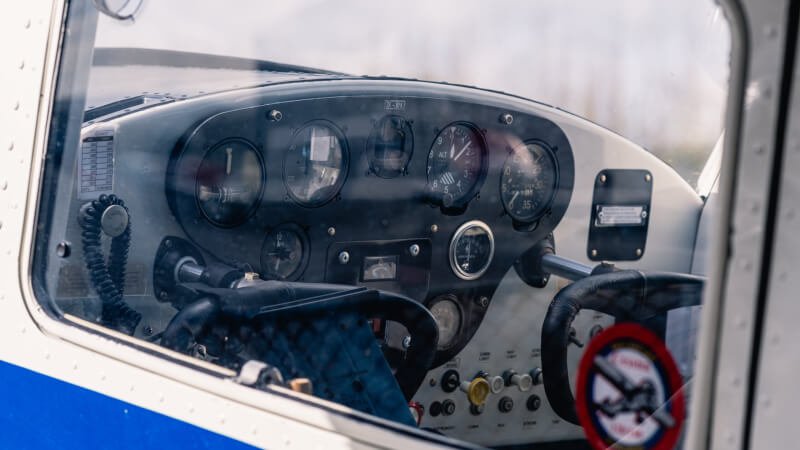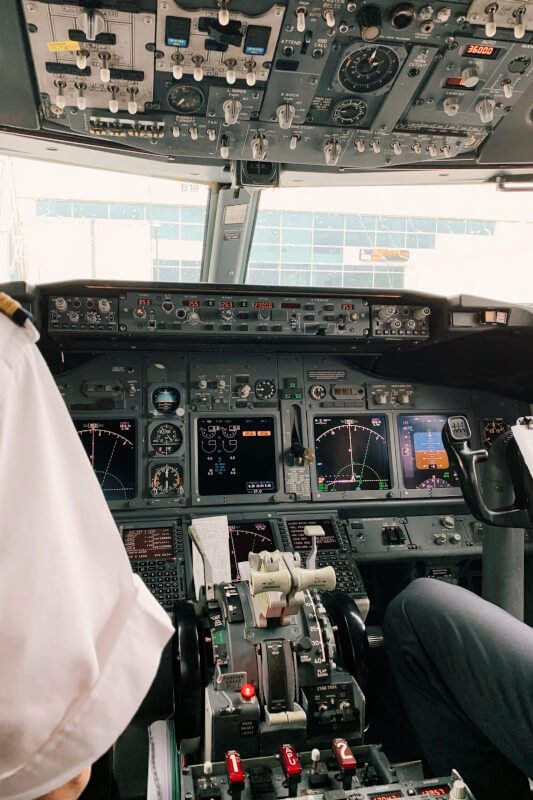So, you’ve got your brand new RC aircraft and you’re ready to take it for a spin. But before you start soaring through the skies, you need to make sure your gyro or accelerometer is properly calibrated. It may sound like a daunting task, but fear not! In this article, we will guide you through the simple steps to calibrate these important components of your RC aircraft, ensuring a smooth and stable flight every time. So grab your controller and let’s get started on fine-tuning your aircraft for the ultimate aerial experience!

Understanding Gyroscopes and Accelerometers
What is a gyroscope?
A gyroscope is a device that helps in measuring or maintaining orientation and angular velocity. It consists of a spinning disk or wheel that is mounted in such a way that its axis of rotation can freely move in any direction. As the gyroscope spins, it tends to maintain its orientation in space, making it a critical component in maintaining stability and controlling the movements of an RC aircraft.
What is an accelerometer?
An accelerometer, on the other hand, is a device used to measure changes in velocity or acceleration. It is typically designed with a mass attached to a spring, and when the accelerometer experiences a change in velocity, this mass moves, causing the change to be measured. For an RC aircraft, accelerometers are important in determining the aircraft’s attitude and motion, allowing for accurate control and navigation.
How do gyroscopes and accelerometers work?
Gyroscopes rely on the principle of angular momentum and the conservation of angular momentum. As the gyroscope spins, its axis of rotation remains fixed, unless a force is exerted upon it. This property is what allows gyroscopes to be used for stability and control in RC aircraft. When the aircraft experiences a change in orientation, the gyroscope detects this deviation and applies corrective measures to return it to the desired position.
Accelerometers, on the other hand, work based on the measurement of acceleration forces. These forces can be caused by changes in velocity or by the force of gravity. By measuring these accelerations, an accelerometer can provide crucial information about the movement and position of the RC aircraft. This data is then used to adjust control inputs and ensure accurate flight performance.
Why do you need to calibrate them?
Calibration is essential for gyroscopes and accelerometers to accurately measure and respond to changes in the aircraft’s movements. Over time, these sensors may become subject to drift or lose their accuracy due to external factors. Calibrating them ensures that they are properly aligned and calibrated to provide accurate data to the flight controller. Without calibration, the readings from these sensors may be incorrect, leading to unstable flight performance and a higher risk of accidents.
Preparation for Calibration
Read the Manual
Before beginning the calibration process, it is crucial to read the manual provided by the manufacturer. Each RC aircraft model may have specific instructions and requirements for calibration. Familiarize yourself with the steps and guidelines provided to ensure a smooth and successful calibration process.
Ensure Proper Power Supply
Make sure your RC aircraft has a fully charged battery or is connected to a stable power source during the calibration process. Insufficient power can result in inaccurate readings and incorrect calibration. It is important to have a reliable power supply to ensure the gyroscope and accelerometer work optimally during the calibration process.
Check Firmware and Software
Before calibration, ensure that both the firmware on your RC aircraft and the software on your control system are up to date. New firmware updates often include improvements and bug fixes that can positively impact the accuracy of the gyroscope and accelerometer readings. Keeping your devices up to date ensures the best possible calibration results.
Choose an Open Area
Find an open area, free from obstacles and interference, to perform the calibration process. This allows the sensors to accurately measure the aircraft’s movements without any external disturbances. A wide, open space also provides room for test flights and adjustments after the calibration.
Inspect for Damages
Before calibrating, thoroughly inspect your RC aircraft for any damages or loose components. A damaged aircraft can impact the accuracy of the readings from the gyroscope and accelerometer. Check for any loose wires, broken parts, or signs of wear and tear. If any issues are found, address them before proceeding with the calibration process.

Calibrating Gyroscopes
Powering On
Ensure that your RC aircraft is powered on and connected to a stable power source before starting the gyro calibration process. The sensors need to be operational to accurately measure and adjust the aircraft’s orientation.
Entering Calibration Mode
Most RC aircraft models have a specific calibration mode that needs to be activated. Refer to your manual to identify the steps required to enter this mode. This mode usually disables any control inputs and allows the gyroscope to be calibrated without any interference.
Follow Manufacturer’s Instructions
Once in calibration mode, carefully follow the manufacturer’s instructions on how to calibrate the gyroscope. This typically involves keeping the aircraft as still as possible while the gyroscope registers this stationary position as the baseline. Each model may have specific instructions, so it is crucial to follow them precisely to ensure accurate calibration.
Performing Gyro Calibration
During the gyro calibration process, the aircraft must remain completely still and level. This allows the gyroscope to establish the correct reference point for its measurements. Follow the prompts given by the manufacturer or the control system software to complete the calibration process. Once completed, the gyroscope will be properly calibrated and ready for accurate flight control.
Calibrating Accelerometers
Powering On
Ensure that your RC aircraft is powered on and connected to a stable power source before starting the accelerometer calibration process. The sensors need to be operational to accurately measure and adjust the aircraft’s acceleration.
Entering Calibration Mode
Similar to gyro calibration, most RC aircraft models have a specific calibration mode for accelerometers. Refer to your manual to identify the steps required to enter this mode. This mode typically disables any control inputs and allows the accelerometer to be calibrated without any interference.
Follow Manufacturer’s Instructions
Once in calibration mode, carefully follow the manufacturer’s instructions on how to calibrate the accelerometer. This usually involves keeping the aircraft still while it registers the reference level of acceleration. Again, it is crucial to follow the specific instructions provided by the manufacturer to ensure correct calibration.
Performing Accelerometer Calibration
During the accelerometer calibration process, it is essential to keep the aircraft steady and level. This allows the accelerometer to establish the correct baseline level of acceleration. Follow the prompts given by the manufacturer or the control system software to complete the calibration process. Once finished, the accelerometer will be properly calibrated, allowing for accurate control and navigation.

Common Calibration Procedures
Trim Calibration
Trim calibration involves adjusting the trim settings of your RC aircraft to achieve a balanced and level flight. These settings fine-tune the control surfaces to counteract any deviations from level flight. Follow the manufacturer’s instructions on how to perform trim calibration as it can vary depending on the model and control system.
Multi-axis Calibration
Multi-axis calibration ensures that the gyroscope and accelerometer readings are accurately aligned across all three axes of motion (roll, pitch, and yaw). This calibration process helps maintain stability and control during flight maneuvers. Consult your manual or control system software for specific instructions on multi-axis calibration.
Autolevel Calibration
Autolevel calibration is a feature found in some RC aircraft that automatically adjusts the control surfaces to level the aircraft when no control input is given. This calibration process ensures that the aircraft remains stable and level during flight, reducing the risk of accidents. Follow the manufacturer’s instructions to enable and calibrate the autolevel feature if your aircraft supports it.
Testing and Fine-tuning
Flight Testing
After completing the calibration process, it is important to perform flight tests to observe the aircraft’s stability and performance. Take the aircraft to a controlled open area and execute various maneuvers to determine if any adjustments are necessary. Flight testing allows you to assess the impact of the calibration on the aircraft’s flight characteristics.
Observe Stability
During flight testing, pay close attention to the stability of the aircraft. Check if it maintains a level flight or exhibits any unwanted movements. If the aircraft shows signs of instability or erratic behavior, adjustments may be required. This could be an indication of a need to repeat the calibration process or tweak control inputs.
Adjusting Control Angles
If necessary, make small adjustments to the control angles to fine-tune the aircraft’s flight performance. This can be done using the trim settings or by making manual adjustments to the control surfaces. Be cautious and make incremental changes to prevent overcorrection or destabilizing the aircraft.
Repeat Calibration if Necessary
If the flight testing reveals persistent issues with stability or control, it may be necessary to repeat the calibration process. Factors such as external interference or physical changes to the aircraft can affect the accuracy of the sensors, warranting a recalibration. Follow the manufacturer’s instructions to ensure a proper and accurate calibration.
Tips and Tricks
Keep Spare Parts Handy
While calibrating your RC aircraft, it is always a good idea to have spare parts on hand. Accidents can happen, and having replacement components readily available can save you time and frustration. Keep extra propellers, control surfaces, and other essential parts in your toolkit.
Check for Interference
Before and during calibration, check for any sources of interference that can affect the accuracy of the sensors. Nearby electronic devices, power lines, and other RC aircraft transmitting on the same frequency can interfere with the calibration process. Move to a different location if interference is detected.
Consider Environmental Factors
Environmental factors can also impact the calibration and flight performance of your RC aircraft. Wind, temperature, and humidity can affect stability and control. Consider these factors during flight testing to ensure accurate assessments and adjustments.
Maintain Your RC Aircraft
Regular maintenance of your RC aircraft is essential to ensure accurate calibration and optimal performance. Clean the sensors, regularly check for loose connections, and inspect for any wear and tear. Proper maintenance will prolong the lifespan of your aircraft and enhance the effectiveness of the calibration process.
Benefits of Calibration
Improved Flight Performance
Calibrating the gyroscope and accelerometer on your RC aircraft leads to improved flight performance. Accurate sensor readings allow the flight controller to make precise adjustments, resulting in smoother and more controlled flights.
Enhanced Stability and Control
A well-calibrated gyroscope and accelerometer provide enhanced stability and control during flight. This means the aircraft will respond accurately to control inputs, making it easier to perform maneuvers and maintain steady flight paths.
Reduced Risk of Accidents
Calibration reduces the risk of accidents by ensuring accurate readings and control response. When the sensors are calibrated correctly, the pilot can rely on the aircraft’s stability and control, reducing the likelihood of unexpected movements or crashes.
Seeking Professional Help
Complex Calibration Procedures
In some cases, the calibration procedures for gyroscopes and accelerometers can be complex and require technical knowledge. If you find yourself struggling with the process or unsure about certain aspects, seeking professional help can ensure accurate calibration.
Lack of Technical Expertise
Not everyone may have the technical expertise required for precise calibration. If you lack the necessary knowledge or experience, it is advisable to seek assistance from someone with the expertise in RC aircraft calibration. They can guide you through the process or perform the calibration on your behalf.
Repair and Maintenance Services
If you encounter issues with your RC aircraft or suspect a problem with the sensors, it might be necessary to consult repair and maintenance services. These professionals have the tools and knowledge to diagnose and fix any issues, ensuring that your aircraft is in optimal condition for safe and enjoyable flying.
Conclusion
Calibrating the gyroscope and accelerometer on your RC aircraft is crucial for accurate flight performance, stability, and control. By understanding the principles behind these sensors and carefully following the manufacturer’s instructions, you can ensure optimal calibration. Regular calibration, along with proper maintenance and flight testing, will enhance your RC aircraft’s performance and reduce the risk of accidents. Whether you choose to calibrate your aircraft on your own or seek professional help, the benefits of calibration are well worth the effort. Enjoy your flights with confidence, knowing that your RC aircraft is properly calibrated and ready for smooth and controlled flights.


